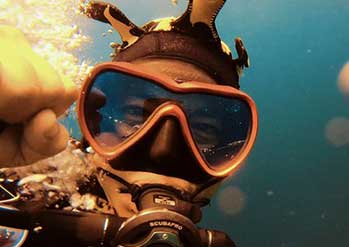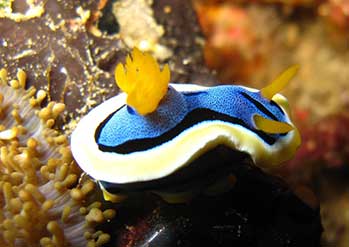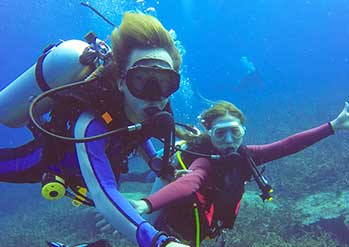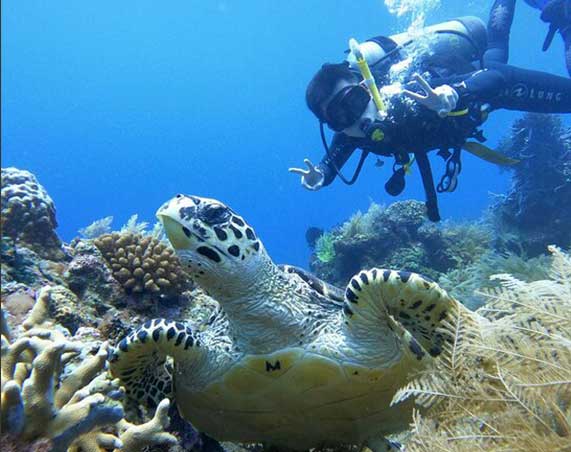Mola-Mola (Ocean sunfish) in Indonesia
The massive Ocean sunfish (Mola) is a unique and odd-looking fish. Mola are the world’s heaviest bony fish, reaching up to 1,000kg, and can have 300 million eggs. With their flat, tail-less body, they are not only the world’s largest bony fish, but also one of the most elusive fishes in the world. Sunfish develop their truncated, bullet-like shape because their back fin simply never grows; instead, it folds into itself as the enormous creature matures, creating a rounded rudder called a clauvus.
Their two long dorsal fins mean Mola-Mola can be 3.5m in height but, although they have rounded bodies, they are very narrow when seen from front/back (“mola” is Latin for ‘millstone’).
Mola-Mola in German is ‘schwimmender kopf’ = floating head; in French, Poisson Lune (Moon Fish). In fact, most languages have a name for Mola-Mola (some make more sense than others!).
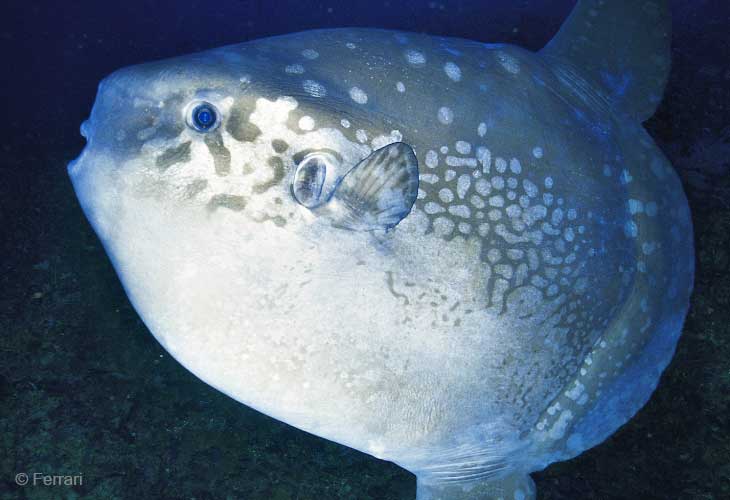
WHERE in Indonesia to see Mola-Mola
Bali: The most likely place in Indonesia to see Molas. They are seen off the east coast of the mainland, and around the offshore island of Nusa Penida.
South of Komodo: The site is actually famous for Manta rays however sunfish are sometimes also seen.
Pantar Strait, Alor: Molas come up from the very deep waters to get cleaned and can be found lying flat on the surface.
WHEN to see Mola-Mola
To write from personal knowledge and experience, I’ll focus on Bali’s Mola which I believe are in Bali’s waters year-round (recorded as deep as 360m).
Mola suffer from external parasites (up to 40 kinds!) which need to be removed by ‘cleaner fish’. The cleaner fish live much shallower on coral reefs.
Therefore, from July to mid-November, Mola-Mola drift up on the incredibly cold, but very fertile, upwelling from the 3.5km deep Bali Trough off Bali’s southern coast, to get cleaned. That is how we are able to see them at recreational diving depths.
Seven days from now, our Nusa Penida trip will be focusing on Mola-Mola sites. So, if you are aiming for Mola-Mola this year, contact our Dive Travel Consultants and get yourself signed up. In addition, make sure you don’t miss out our Mola-Mola special offers.
HOW to see Mola-Mola
Despite their size, if they don’t feel safe, Mola won’t come close to the reef or approach the schools of fishes waiting to clean them.
If you see a Mola (or 4) or your AquaMarine Dive Guide spots one (or 7), just stop moving. At that stage, do not try to approach the Mola, two flips of those long dorsal fins, and they will be gone!
You need to stay really, really still, close to the reef. Let the fish come closer, settle on the reef, and go into their Cleaning Meditation. Once a Mola finds a place to get cleaned, it tips 45 degrees upwards, and often slightly sideways, and genuinely seems to go into a trance.
When that happens, usually you and your group, rather than the Molas, will be the first ones to leave as you are limited by maximum bottom time, or air supply. Plus the water can be very cold.
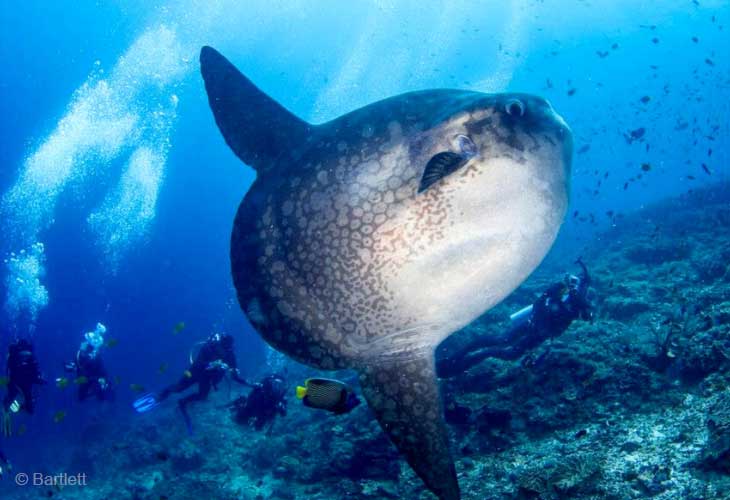
Movement and Diet
Mola are clumsy (but fast) swimmers, waggling their large dorsal and anal fins to move and steering with their clauvus.
Ocean sunfish mainly eat jellyfish – obviously in huge quantities! – so plastic bags pose a big hazard to them (this also applies to turtles).
Protection for Mola-Mola (Ocean sunfish)
The Coral Triangle Center (CTC, a non-profit organization engaged in Coral Reef Conservation) has proposed to the Indonesian Government to include Mola as one of the country’s Protected Animals.
PS: I’ll let you into a little secret – ssshh! Here in Bali we actually have Mola alexandrini rather than Mola-Mola, but “Mola-Mola” is so much more fun to say and it’s used Bali-wide.











